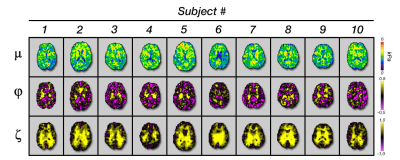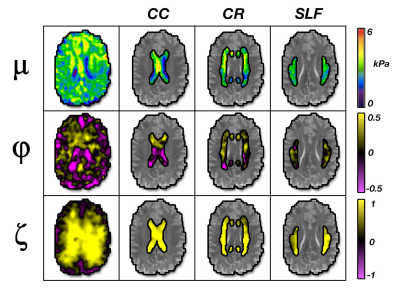Daniel R. Smith1, Diego A. Caban-Rivera1, Matthew D. J. McGarry2, L. Tyler Williams1, Grace McIlvain1, Charlotte Guertler3, Ruth J. Okamoto3, Damian Sowinski2, Elijah Van Houten4, Phil V. Bayly3, Keith D. Paulsen2, and Curtis L. Johnson1
1Biomedical Engineering, University of Delaware, Newark, DE, United States, 2Thayer School of Engineering, Dartmouth College, Hanover, NH, United States, 3Mechanical Engineering and Materials Science, Washington University in St. Lous, St. Louis, MO, United States, 4Mechanical Engineering, Universite de Sherbrooke, Sherbrooke, QC, Canada
1Biomedical Engineering, University of Delaware, Newark, DE, United States, 2Thayer School of Engineering, Dartmouth College, Hanover, NH, United States, 3Mechanical Engineering and Materials Science, Washington University in St. Lous, St. Louis, MO, United States, 4Mechanical Engineering, Universite de Sherbrooke, Sherbrooke, QC, Canada
Using multi-excitation MRE and TI-NLI, we estimated and found
significant differences in the anisotropic mechanical properties, substrate
shear modulus μ, shear anisotropy φ, and tensile
anisotropy ζ, within individual
regions of interest of the human brain.


